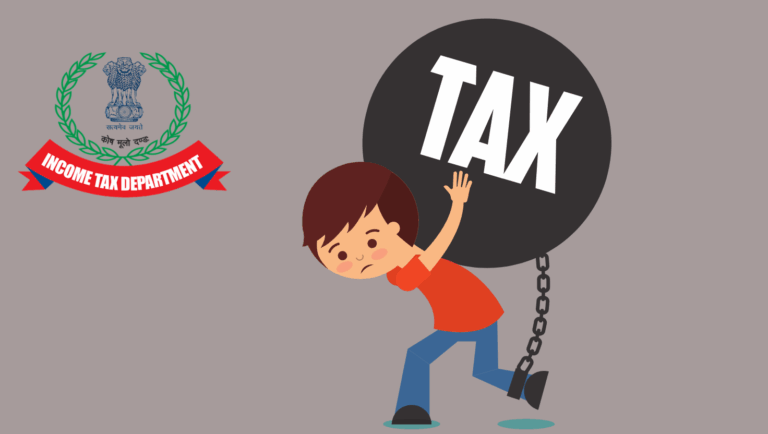
Quit your job too soon? The Supreme Court’s 2025 ruling could cost you lakhs! Upholding employment bonds, the verdict enforces “reasonable” penalties for early resignations, shaking India’s job market. With 31% labor churn and AI disruptions fueling ‘revenge quitting,’ will it trap workers or stabilize careers?
You have secured your dream role in Bangalore’s thriving IT sector. A lucrative signing bonus, promises of swift career advancement, and the buzz of a dynamic workplace surround you. But six months later, a better opportunity beckons—higher salary, remote work options, and a healthier work-life balance. You decide to resign. Sounds simple, doesn’t it? But what if that hasty exit triggers a staggering ₹2 lakh penalty? In a bombshell decision, the Supreme Court of India has upheld employment bond clauses, sending shockwaves through the workforce. This landmark ruling on resignation penalties could reshape job mobility across India. As we navigate August 2025, with job quitting rates soaring amid economic uncertainty, this verdict is both timely and contentious. What did the court rule, and how could it dent your finances? Let’s dive into the suspense.

The Supreme Court’s Decision
The drama stems from a case rooted in Vijaya Bank, now merged with Bank of Baroda. In Vijaya Bank & Anr. v. Prashant B. Narnaware, decided on May 14, 2025, the Supreme Court reversed a High Court ruling, affirming that employment bonds imposing penalties for early resignation are legally enforceable under specific conditions. The employee had signed a bond mandating three years of service or payment of ₹2 lakhs to cover training costs. When they quit prematurely, the bank demanded the penalty, and the apex court backed them.
Here’s the kicker: The court ruled that penalties must be “reasonable” and not violate Section 27 of the Indian Contract Act, 1872, which prohibits restraints on trade. Clauses banning employees from working elsewhere post-resignation are void, but those requiring service during a bond period or compensating for employer investments—like specialized training—are valid. Delivered by a bench led by Justice Hrishikesh Roy, the verdict emphasizes fairness: penalties can’t be excessive but can recover legitimate losses. Quit too soon, and you might owe a fortune.
This isn’t the first time Indian courts have tackled resignation penalties. Historic cases like Superintendence Company of India v. Krishan Murgai (1980) struck down restrictive bonds as unconstitutional under Article 19(1)(g), which safeguards the right to practice any profession. Yet, the 2025 ruling pivots the narrative, reinforcing that bonds are enforceable if they align with public policy and avoid exploitation. The suspense lingers: Will this trigger a wave of bond clauses across industries like IT, banking, and beyond?

India’s Job Market in 2025: A Cauldron of Change
To grasp the ruling’s impact, let’s zoom out to India’s turbulent job landscape in 2025. Job quitting has reached unprecedented levels, fueled by post-pandemic shifts, AI-driven disruptions, and a relentless pursuit of better opportunities. The World Economic Forum’s Future of Jobs Report 2025 estimates Southern Asia’s labor-market churn at 31%, with 36% of employers anticipating worsening talent retention. This means nearly one in three workers could switch roles within five years, driven by skill upheavals—39% of core skills are expected to evolve by 2030 due to AI and automation.
Data from ADP Research paints a grim picture: workforce engagement in India has plummeted to 19% in 2025, a sharp decline from previous years, signaling widespread dissatisfaction. Randstad India’s Workmonitor 2025 survey adds fuel to the fire: 52% of employees are ready to quit jobs lacking flexibility, while 60% cite stagnant career growth as a dealbreaker. The IT sector, India’s economic backbone, is reeling from layoffs—Tata Consultancy Services alone cut 12,000 jobs in July 2025, prompting preemptive resignations.
Then there’s “revenge quitting,” a 2025 phenomenon where employees abruptly leave due to burnout or poor management. Statista’s 2025 survey reveals 45% of Indian men and 38% of women are likely to quit over poor work-life balance. With remote work surging—projected to include 60-90 million Indians by 2025—this mobility clashes with rigid bond clauses. The Supreme Court’s ruling lands in this volatile mix, potentially curbing impulsive quits while raising alarms about employee autonomy.

The Stakes for Employees: A High-Risk Game
Picture signing a shiny new contract, unaware of the fine print. The ruling’s biggest twist? It empowers employers to enforce resignation penalties, but with caveats that could either save or sink you. If you quit before completing a bond period—often 1-3 years—you could face damages tied to training costs, like the ₹2 lakhs in the Vijaya Bank case.
Pros: Bonds discourage frivolous job-hopping, promoting stability in high-churn sectors. With India’s unemployment rate at 2% but vulnerable employment at 50%, bonds could encourage loyalty and skill development.
Cons: They risk trapping workers in toxic environments. Amid revenge quitting trends, where 25% of resignations stem from burnout, penalties could exacerbate mental health challenges. Notably, 21% of working-age Indians are not in education, employment, or training (NEET), amplifying the stakes.
In public sector units (PSUs), where bonds are prevalent, the ruling may tighten contract terms, demanding compensation for early exits. Freshers, often the hardest hit, face added pressure: 92% of Indian employers plan reskilling by 2030, but breaching bonds could derail early careers. The suspense builds: Could this verdict spark a flood of lawsuits challenging “unreasonable” penalties?
Employers’ Perspective: A Defense Against Turnover
For employers, the ruling is a lifeline in a stormy market. With talent availability worsening for 27% of Indian firms, bonds safeguard investments. The court validated clauses covering genuine losses, such as AI training, where 72% of employers plan reskilling amid 86% AI-driven transformation. This could reduce turnover in industries like IT and consumer goods, where five-year churn reaches 41%.
However, overreach could backfire. A July 2025 Delhi High Court ruling reaffirmed limits on post-employment non-compete clauses, aligning with the Supreme Court’s stance. Employers must ensure bonds are fair, and exclusive jurisdiction clauses now streamline litigation. For multinationals, this reshapes hiring strategies in India, balancing retention with diversity, equity, and inclusion (DEI) priorities—95% of Indian organizations emphasize inclusion.
Real-Life Drama: Case Studies and Data Insights
The suspense intensifies with real-world cases. In the Vijaya Bank saga, the employee argued the bond was coercive, but the court deemed it reasonable for covering probationary training. Similarly, a 2025 case in Bengaluru saw a tech developer pay ₹1.5 lakhs for quitting after nine months, upheld under the new precedent.
Data paints a vivid picture: India’s working-age population stands at 672.8 million, with 74% labor force participation but high vulnerability. AI-driven job displacement, projected at 92 million globally by 2030, contrasts with India’s 14% net job growth, favoring roles like AI specialists (72% growth). Yet, 11% of the workforce risks remaining unupskilled, facing penalties for quitting untrained. Remote work, encompassing 60-90 million Indians, clashes with bond rigidity. Korn Ferry’s 2025 survey underscores employee demands for flexibility, driving quits. Will bonds evolve to accommodate hybrid work models?

The Broader Implications: A Shifting Landscape
The ruling’s ripple effects are profound. For employees, it demands meticulous scrutiny of employment contracts. Bonds often span 1-3 years, and breaching them could mean hefty fines proportional to employer investments. This could deter job-hopping but also lock workers into unfavorable roles, especially in high-pressure sectors like IT, where burnout is rampant.
For employers, the verdict offers a tool to combat turnover but requires careful calibration. Bonds must be transparent and tied to verifiable costs, like training or onboarding. Overly punitive clauses risk legal challenges, as employees may contest penalties as “unreasonable” under labor laws. The ruling also strengthens PSU contracts, where bonds are standard, but private sectors like IT and startups may adopt similar clauses, reshaping hiring norms.
The job market’s volatility adds complexity. With 31% labor churn and AI reshaping 39% of skills by 2030, employers face pressure to retain talent while employees seek flexibility. The rise of remote work—10-15% of India’s workforce—creates tension with rigid bonds. Could this ruling push companies to offer hybrid bond models, balancing retention with employee freedom?
Navigating the Risks: Expert Advice
Before you draft that resignation letter, pause. Legal experts recommend negotiating bond terms upfront, ensuring penalties are capped at actual costs. If challenging a bond, employees can argue it’s unreasonable through labor courts or under the Industrial Disputes Act, 1947. Data shows 55% of Indian firms cite skills gaps as a barrier, so upskilling investments must justify bond terms.
For employers, transparency is key. Draft bonds that clearly link penalties to expenses like AI training or certifications. Employees should build emergency funds to cover potential penalties, especially in high-quit sectors like IT, where turnover is relentless. With 45% of men and 38% of women citing work-life balance as a quit trigger, financial preparedness is critical.
The Human Cost: Stories from the Field
Consider Priya, a 26-year-old software engineer in Hyderabad. She signed a two-year bond with a tech giant, lured by a ₹50,000 signing bonus. Eight months in, burnout and a toxic manager pushed her to quit. The penalty? ₹1.8 lakhs for training costs. The Supreme Court’s ruling upheld her employer’s claim, leaving Priya scrambling to pay. Similarly, in a PSU case, a junior banker faced a ₹2.5 lakh fine for resigning after 18 months, a decision now backed by the 2025 verdict.
These stories highlight the ruling’s real-world impact. With 672.8 million working-age Indians and 50% in vulnerable employment, penalties add financial strain. The NEET population—21% of working-age individuals—faces heightened risks, as bonds could deter job market entry. Meanwhile, AI-driven roles like data scientists (72% growth) demand upskilling, making bonds a double-edged sword.
The Bigger Picture: Freedom vs. Stability
The Supreme Court’s ruling arrives at a crossroads for India’s workforce. On one hand, it protects employers from turnover losses, especially in high-investment sectors. On the other, it risks stifling employee mobility, particularly for freshers and those in toxic workplaces. The 31% labor churn, coupled with AI’s disruption of 39% of skills by 2030, underscores the need for balance.
Will bonds evolve to accommodate remote work or hybrid models? Could they integrate flexibility clauses to align with employee demands? The Korn Ferry 2025 survey highlights a power shift, with workers prioritizing flexibility over loyalty. As 60-90 million Indians embrace remote work, rigid bonds may face pushback, potentially sparking legal battles over “reasonable” penalties.
Final Thought: A New Era for India’s Job Market
As the dust settles on this Supreme Court ruling, one truth stands out: Quitting your job too soon in India now carries serious risks—financial penalties, career setbacks, and legal battles. In a 2025 landscape of 31% labor churn, AI-driven upheavals, and revenge quitting, this decision balances employer rights with employee mobility. But at what cost? Will it stabilize the workforce or curb innovation? The suspense continues as new cases emerge. For now, scrutinize your contracts—your next career move could come with a hefty price tag.
































